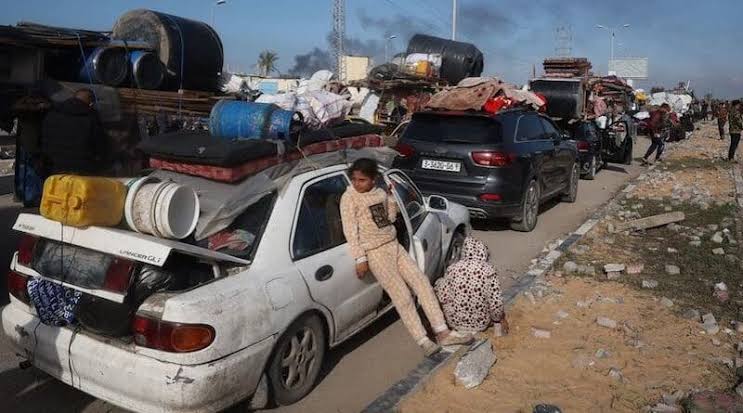Israeli forces have exited the Netzarim Corridor, a military area that separates the northern and southern regions of the Gaza Strip.
In the aftermath of the withdrawal, numerous Palestinians, traveling in vehicles and on carts filled with mattresses and various supplies, began their return to northern Gaza, often encountering scenes of significant devastation. This Israeli pullback aligns with the ceasefire agreement established with Hamas on January 19, which has thus far resulted in the release of 16 Israeli hostages and 566 Palestinian detainees.
By the conclusion of the initial phase of the ceasefire in three weeks, it is anticipated that 33 hostages and 1,900 prisoners will be released. Israel has reported that eight of the 33 hostages are deceased.
Hamas took 251 hostages and caused approximately 1,200 fatalities during its assault on Israel on October 7, 2023, which ignited the Gaza conflict.
Read more: Sri Lanka hit by nationwide power cut
According to the health ministry controlled by Hamas in Gaza, at least 48,189 Palestinians have lost their lives due to Israel’s military operations. The United Nations reports that around two-thirds of the buildings in Gaza have suffered damage or destruction as a result of these attacks.
At the onset of the conflict, approximately 700,000 residents from northern Gaza relocated to southern regions following mass evacuation orders issued by the Israeli military prior to a ground invasion of the Palestinian territory. Many of these displaced individuals were later compelled to relocate multiple times as Israeli forces advanced into southern Gaza as well.
Additionally, they faced restrictions on returning to their homes via the Netzarim Corridor, which extends from the Gaza-Israel border to the Mediterranean Sea.
Last month, Israeli forces partially withdrew from the western section of the corridor, allowing the first Palestinians—on foot—to traverse the coastal Rashid Street into northern Gaza.
Those traveling by vehicle must utilize Salah al-Din Street and are subject to weapon screenings conducted by US and Egyptian security personnel.
The Israel Defense Forces have not provided an official statement regarding the withdrawal from the eastern section of the corridor, which will maintain their control over Gaza’s borders, but not the road that previously divided the area.
The Haaretz newspaper reports that the Hamas-run Gaza interior ministry has been advising residents to “exercise caution and adhere to the existing movement guidelines for their safety.”
The troop withdrawal coincides with an upcoming visit by an Israeli delegation to Qatar, which has been facilitating discussions between the conflicting parties in the Gaza war. The Israeli government has indicated that the delegation’s initial focus will be on “technical matters” related to the first phase of the ceasefire agreement, rather than the more complex second phase aimed at establishing a permanent ceasefire, facilitating the exchange of all remaining living hostages in Gaza for additional Palestinian prisoners, and ensuring a complete withdrawal of Israeli forces from the region. This process will necessitate further guidance from Israeli Prime Minister Benjamin Netanyahu, who is currently returning from the United States.
Netanyahu recently became the first foreign leader to meet with US President Donald Trump following Trump’s return to the White House on January 20. During this visit, Trump proposed a significant shift in US policy regarding Gaza, advocating for the removal of the entire civilian population from the territory and the creation of what he termed “The Riviera of the Middle East.” This proposal, which would violate international law, has been widely condemned, including by Arab nations.
The Saudi foreign ministry stated on Saturday that it would not tolerate “any infringement on the Palestinians’ unalienable rights or any attempts at displacement,” accusing Israel of engaging in “ethnic cleansing.” Similarly, Egypt has dismissed any notion of displacing the Palestinian population and has announced plans to convene an emergency summit of the Arab League on February 27 to address what it describes as “serious” developments concerning the Palestinians.
In response to Trump’s proposal, Israel’s President Isaac Herzog expressed to the BBC that it is time for innovative ideas from the US and neighboring countries, such as Egypt and Jordan, which Trump envisions as potential hosts for Gaza’s Palestinians. Herzog emphasized the need to ensure that events similar to those of October 7 do not happen again, asserting that Hamas should no longer govern Gaza.


